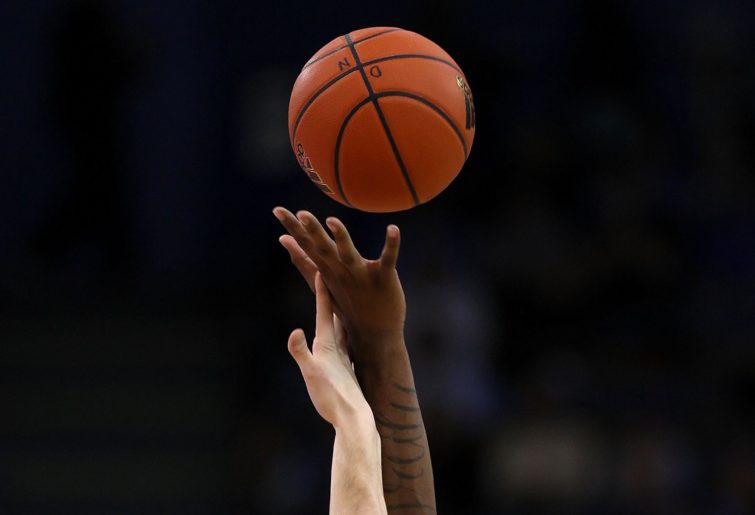Three of the top ten draftees in the 2021 NBA draft were from teams not in the National Collegiate Athletic Association (NCAA) program.
This is becoming more and more frequent by the years, as players choose to avoid college.
The number two pick, Jalen Green, and number seven, Jonathan Kuminga, both turned down their college offers to join the new G League Ignite team, a one-year development program for elite NBA prospects.
Pick six, Australia’s Josh Giddey, decided to play for the Adelaide 36ers in the NBL rather than moving overseas and using his college scholarship.
The reason why this is becoming more common? The NBA’s ‘one-and-done’ rule.
Designed in 2006, the rule change meant prospects now weren’t eligible to enter the draft until they were 19 years old and one year removed from the date of their graduation.
This has since led to the colloquial one-and-done label, as athletes would generally play college ball for a year and then enter the draft when they were of age.
But more recently, prospects are choosing to take different routes to the league like this year’s NBA Rookie of the Year, LaMelo Ball, who played in the NBL in his ‘gap year’ before being taken with the third pick in the draft. He is one of the high-profile catalysts for playing professionally elsewhere before entering the NBA.
Ball, and those in this year’s draft, wanted to play where they could earn money and compete against more experienced players, as opposed to if they were playing in the NCAA. Green and Kuminga both enjoyed a $500,000 salary while playing for the G League Ignite team, and competed against higher-level talent.
Why make the rule?
The two main arguments for the one-and-done rule are so players can develop their game and mature more before entering the NBA, and so teams can save money on paying scouts to have to attend high school games – if the majority of players are in one place, the NCAA, it will require less resources and time to evaluate them.

(Photo by Lisa Blumenfeld/Getty Images)
As we know, prospects are already starting to avoid college and if the trend continues scouts will have to travel overseas to see them in other leagues.
In regards to player development, a University of Arizona study examined the relationship between the years of college basketball experience and players’ statistics throughout their careers in the NBA. The study concluded that, in general, players who skipped college had better statistics across the board, suggesting college may not be a necessity to succeed in the league.
From 1995 to 2005, prior to the rule change, there was at least one player from every draft that came directly out of high school into the NBA. Some of these players include superstars LeBron James, Kobe Bryant, Kevin Garnett, and Dwight Howard.
There was also some so-called busts that were high picks in the draft but didn’t turn out the way scouts had hoped, such as the well-documented Kwame Brown, but as the study suggests, it’s likely that he would have struggled to translate his skills to the NBA regardless of if he had played in college.
It’s unfair on the athletes. The fact that young players, who are clearly ready to show up in the NBA, aren’t able to enter the draft and sign a contract that can provide them with generational wealth is unfair.
Zion Williamson, the 129-kilogram first pick in the 2019 draft, was evidently a developed athlete who would dominate the NBA as an 18-year-old. But having to play a year at Duke, where the only sort of money he may have seen would have been under the table, he risked injuring himself and potentially losing his draft stock, and therefore missing out on a lot of money.
This was the case for Michael Porter Jr, who was seen as a potential top pick in the 2018 draft and projected to be one of the best NCAA players that year, until he tragically broke his back.
Teams with high picks were scared to take a gamble on him in case he was never the same. He slid to 14th, where he was only guaranteed $15 million, in comparison to the $40 million that the number one pick is guaranteed. It was a situation that could have been avoided had he been drafted straight out of high school.
Porter was lucky to have such a good recovery, and is now playing good minutes in the NBA. However, for some, injuries can be major setbacks and possibly even end their career.
A rupture of the Achilles tendon is widely regarded as one of the worst injuries basketball players can experience. A 2020 study from Asia-Pacific Journal of Sports Medicine, Arthroscopy, Rehabilitation and Technology concluded that Achillies tendon ruptures can be career-ending, and if players do come back after missing at least a season, their post-injury peak performance is significantly worse than the pre-injury level.
The money side makes the rule so controversial, because obviously student athletes aren’t on a salary, and until recently, they were barred by the NCAA from making any money from their likeness or image, yet the NCAA could cash in as much as they wanted.
Zion Williamson, the biggest college star of recent memory by far, should have made over $5 million in his Duke season if the NCAA had a similar player revenue share percentage as the NBA, and would have made even more if he was able to monetise his name.
The one-and-done rule seems to have more to do with the NCAA than it does the NBA, and only prevents young athletes from reaching their goals quicker.






























































































